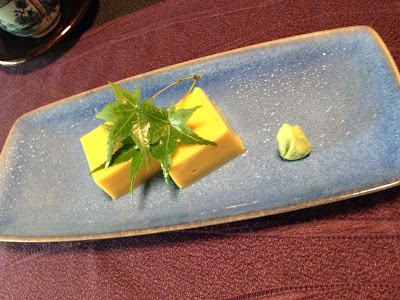The important building in Tofukuji temple has 4 gardens designed by a modern garden designer, Shigemori Mirei.
Shigemori Mirei was not originally a garden designer. He studied Japanese art, tea ceremony and flower arrangement in his early time. Then he went all over japan to conduct on-site research of all the traditional Japanese gardens and compiled the books of Japanese gardens. While doing this, he realized that Japanese gardens were an art. They abstract the nature and express it three-dimensionally. In a sense, it is something like a sculpture. Keeping classic art as a foundation. he aimed at eternal modernism
Let's see the gardens.
The South garden.The West garden shows a traditional Japanese pattern called Ichimatsu with white sand and azaleas. The moss continues from the south garden to this garden.
The north garden.
It has a smaller Ichimatsu pattern. When you see this garden, you will find that the left side has a clear and neat pattern but as it goes to the right, the pattern becomes blur and disappears at the end. This is affected by the technique of Japanese old paintings, which makes variety by making the border blur.
These stones represent the seven stars in the sky. It is unlikely that the factor of constellation is used for the garden. In addition, these stones were used as cornerstones of the old lavatory.
Why Mirei used the old materials? It is because of zen teaching. When he designed the gardens, he was told to use the old materials to eliminate waste.
I can say that you will enjoy a little different but traditional zen garden here.








































